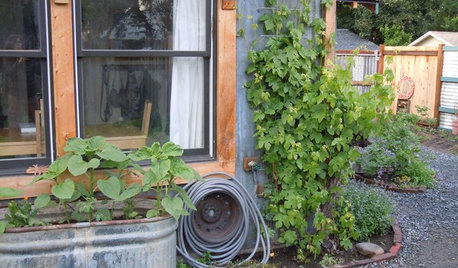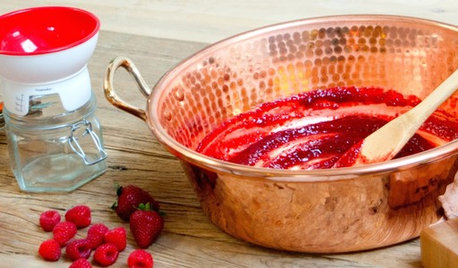deep water culture tomatoes too much work!
paradajka
10 years ago
Related Stories

EDIBLE GARDENSSummer Crops: How to Grow Tomatoes
Plant tomato seedlings in spring for one of the best tastes of summer, fresh from your backyard
Full Story
FEEL-GOOD HOMERejuvenate Your Home With Deep-Rooted Traditions
Give the subtle energies and spiritual side of your home some attention, and watch newfound calm and beauty blossom
Full Story
FARMHOUSESHouzz Tour: German Tradition Deep in the Heart of Texas
Rooted in architecture from the 1800s, this award-winning home mixes history with the vernacular of today
Full Story
GARDENING GUIDESEssential Watering Tips for Your Edible Garden
To give your edible plants just what they need, check out these guidelines for how, when and how much to water
Full Story
SAVING WATERXeriscape Gardens: How to Get a Beautiful Landscape With Less Water
Conserve water and make gardening much easier with the xeriscape approach’s 7 principles
Full Story
LANDSCAPE DESIGNGet Along With Less Lawn — Ideas to Save Water and Effort
Ditch the mower and lower your water bill while creating a feast for the eyes with diverse plantings and gathering places
Full Story
GARDENING GUIDESEdible Gardening Essentials: Tips for Traditional Hand Watering
Save the expense and hassle of a complicated garden system with a simple watering can or inexpensive hose add-ons
Full Story
GREEN BUILDINGWater Sense for Big Savings
Keep dollars in your pocket and preserve a precious resource with these easy DIY strategies
Full Story
GARDENING GUIDESCalifornia Gardener's June Checklist
Update your hydrangeas, catch up on tomatoes and more ways to enjoy your California garden in June
Full Story
SHOP HOUZZHouzz Products: Save a Taste of Summer
Can't bear to part with the flavors of summer peaches, berries and tomatoes? Then jam on it!
Full StoryMore Discussions








Southpac-hydro
grizzman
Related Professionals
New Bedford Landscape Architects & Landscape Designers · Camas Landscape Architects & Landscape Designers · Quincy Landscape Architects & Landscape Designers · Goodyear Landscape Contractors · Dedham Landscape Contractors · Englewood Landscape Contractors · Federal Way Landscape Contractors · Hawthorne Landscape Contractors · Long Branch Landscape Contractors · Norwalk Landscape Contractors · Nutley Landscape Contractors · Oxnard Landscape Contractors · Point Pleasant Landscape Contractors · Welby Landscape Contractors · Vadnais Heights Landscape ContractorsRicone
garland_home
paradajkaOriginal Author
paradajkaOriginal Author
grizzman
paradajkaOriginal Author
paradajkaOriginal Author
Jeff_H
paradajkaOriginal Author
grizzman
paradajkaOriginal Author